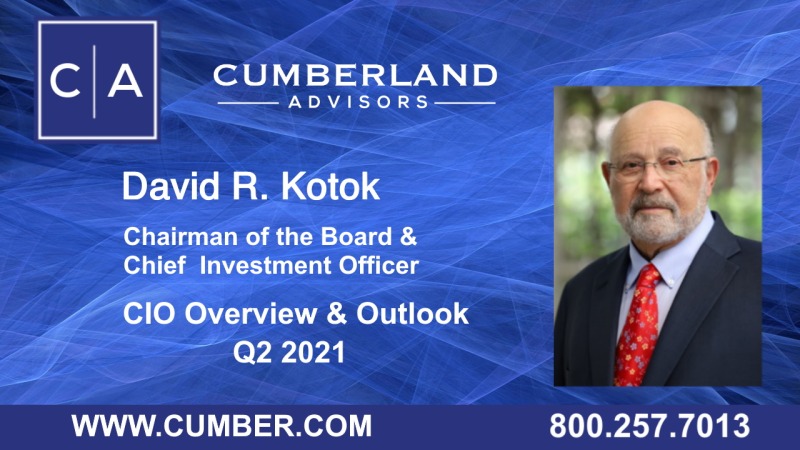Fri Jun 25, 2021
As the close of the second quarter approached, we witnessed US stock markets reacted briefly to the outcome of the Federal Reserve’s June meeting. Chairman Powell planted the first seeds indicating a forthcoming change in Fed policy. The anticipation now is that the Federal Reserve will make its first policy increases of interest rates in 2023, a year or so earlier than market agents had expected.

After the initial downward volatility of the markets and the messaging of Federal Reserve officials that followed the meeting, markets took a different approach, and in fact we had a very strong up day on a Monday, when most market agents had expected the opposite. The Tuesday follow through continued. The one thing we know about the stock market is it doesn’t tell you in advance what it is going to do, and often it breaks your heart if you fall in love with it.
Cumberland raised some cash towards the end of the second quarter and is not fully invested. The purpose of that strategy was to take profits and exit the positions in materials and supplies and commodity price-sensitive areas, which were represented by two exchange-traded funds. As of this writing (June 23), that cash has not been redeployed in other areas of the market. The rest of the US ETF portfolio remains invested, with a portion approximately double the market weight deployed in various components of the broadly defined healthcare sector. The rationale behind overweighting the healthcare sector has to do with our view of the COVID pandemic shock.
We are of the opinion that COVID is, metaphorically speaking, a once-in-a-hundred-years flood. It has not completely run its course even though many are behaving as if has. Bloomberg reported 482 counties in the US are under 25% vaccinated and the Delta variant is spreading rapidly. We view the excess death calculation in the United States at about a million people through the end of May, and we believe that number will only go higher. We see growing evidence of sustained COVID-induced disability (partial and full) and elevated healthcare needs among long COVID victims. Their numbers as of the end of May are variously estimated to be between 3.5 and 10 million people in the United States. All of this indicates to us that there is a very long stretch of intensified activity in the healthcare sector still ahead of us, which is why healthcare is our strategically overweighted position.
The sector’s response to an increased demand for care will evidence itself in applications of medical devices, in the development of biotech treatments, in pharmaceuticals, in healthcare services and healthcare assistance facilities, and in the health insurance sector. No dimension of the healthcare system in the United States will be untouched by COVID. In view of COVID’s longer-term impacts, the healthcare sector overweight is our very large strategic position, and it is in place and continues to be in place as the second quarter of 2021 comes to a close.

